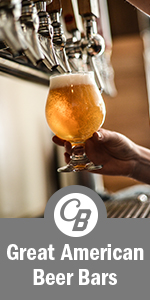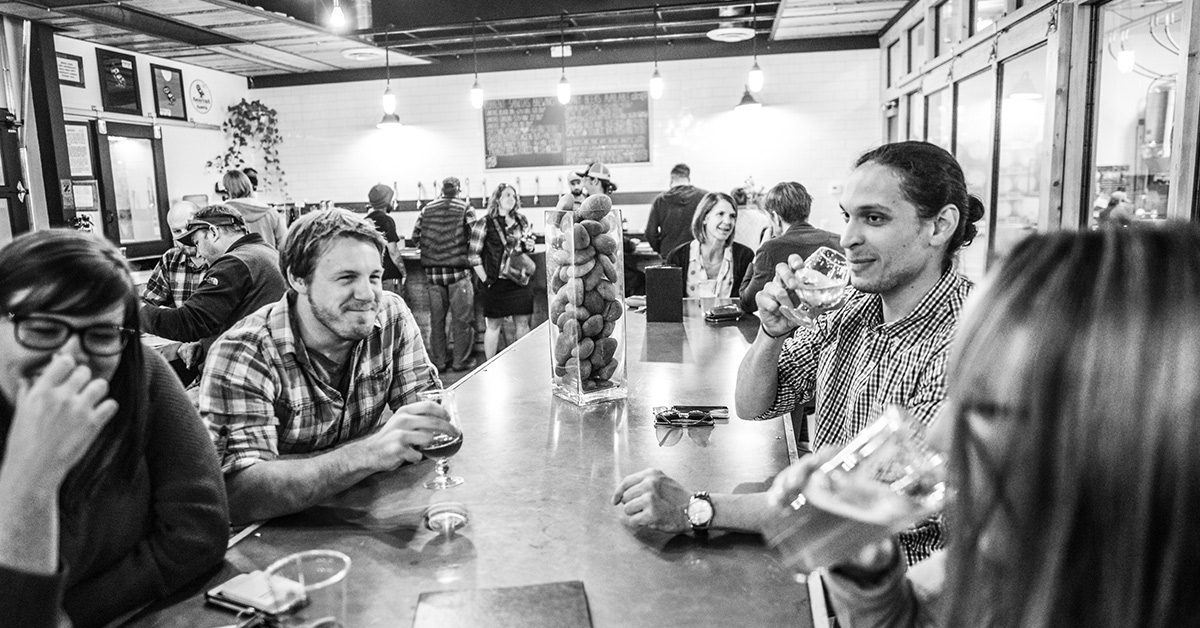As beer brewed by America’s small and independent producers continues to solidify itself as a staple in our culture, bars and restaurants are doing their best to accommodate the growing demands of thirsty, beer-minded customers. Niche craft beer bars are sprouting up all over the country, and bar owners and restaurateurs are hard at work trying to keep up with the pace and their customers’ growing beer knowledge.
In the best case scenario, waitstaff will be knowledgeable and able to speak to the beers that are available—and even recommend food pairings. While there are hundreds of things that go into making a good beer bar great, here are five factors that can really make or break a guest’s experience.
(Chart: How to Pair Beer and Pizza ToppingsOpens in new window)
1. Knowledgeable Waitstaff
While not everyone who works at a bar or serves food needs to be an expert, basic knowledge is paramount in keeping patrons happy. Servers may not need to memorize the IBUs of every beer on tap, but they should know what the term means, and be able to quickly find the information when asked.
Additionally, the more knowledge the waitstaff has, the more beer an establishment will likely sell. Being able to recommend beers that match a customer’s preferences is an easy way to build trust. If a customer says he likes amber ale, a server who can thoughtfully offer an English-style mild will get a better response than one who suggests something with a totally different flavor profile, like a tart Belgian-style Flanders.
Many craft beer patrons treat each pint as a learning experience. At a quality bar, customers know they can rely on the staff to properly steer them in the right direction or help them navigate the waters of a menu full of unfamiliar brews. It is the responsibility of ownership or management to equip the staff with the right tools and information to satisfy their patrons. The CraftBeer.com Beer 101 Course is the perfect place to start if you work in retail sales, the restaurant industry or are simply a burgeoning craft beer fan looking for a solid introduction to the beer universe.

2. Up-To-Date Beer Menu
When arriving at an establishment proudly touting a large selection of craft beer, it’s disappointing when your top three choices aren’t available. It is OK for an establishment to sometimes run out of a beer—in fact, it’s often expected, especially of rarer brews. But if a bar is going to go through the expense of having colorful, laminated menus, the beers on the menu should regularly be in stock.
(Graphic: How to Choose the Right Beer Glass)
A simple change could spare patrons a lot of crushed hopes. Lately I’ve noticed more and more bars putting their craft beer menu on a chalkboard, which is a clever and inexpensive option for a menu that’s easy to update. Some bars opt to display the current tap list on digital screens, which is the ultimate option as selection can be instantly updated.
In addition to keeping lists up to date in-house, keeping an updated tap list online is very helpful to prospective patrons. That way, customers know what to expect before they even walk in the door.
3. Cleanliness/Maintenance 
Dirty glassware and sticky bars or tabletops are quick and easy ways to spoil an experience, but true craft beer cleanliness needs to go deeper. Bars should be paying close attention to glassware, kegs, taps and maintaining their draught systems.
Draught etiquette is another aspect of beer service that is sometimes overlooked. Glasses should be rinsed before they’re filled with beer, and the draught faucet should never come in contact with a patron’s glass or beer.
(Is Your Beer Glass Really Clean?)
The Brewers Association provides lots of information and resources for helping establishments maintain quality draft systems (many of which are free) at DraughtQuality.orgOpens in new window.
4. Serving Temperature
Many craft beers are meant to be served at warmer temperatures than their mainstream cousins, so freezing glassware or storing packaged beer at freezing temperatures is highly discouraged. The cold can diminish one’s ability to properly taste the beer.
Learn more on this topic in “Frosted Glassware Is Not Cool: Temperature Tips for Craft Beer Retailers.”
https://vimeo.com/55453884
5. Glassware
Pairing the proper glassware with the proper beer styles is becoming an expected addition to the craft beer experience. The CraftBeer.com Beer Styles section provides glassware suggestions and serving temperatures for 79 beer styles. Check it out and encourage your favorite beer bars to pay attention to their serving temperatures and glassware selection.
https://vimeo.com/55406096
In the End
It’s awesome that so many bars and restaurants are accommodating craft beer fans. Effort is being made, great beers are being poured and in general, folks are happy. The difference between a bar that blends in and one that has an advantage over its neighborhood competition starts with important details like these.
CraftBeer.com is fully dedicated to small and independent U.S. breweries. We are published by the Brewers Association, the not-for-profit trade group dedicated to promoting and protecting America’s small and independent craft brewers. Stories and opinions shared on CraftBeer.com do not imply endorsement by or positions taken by the Brewers Association or its members.


Share Post